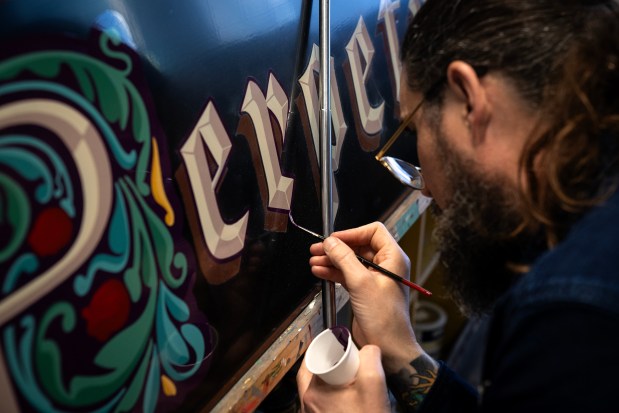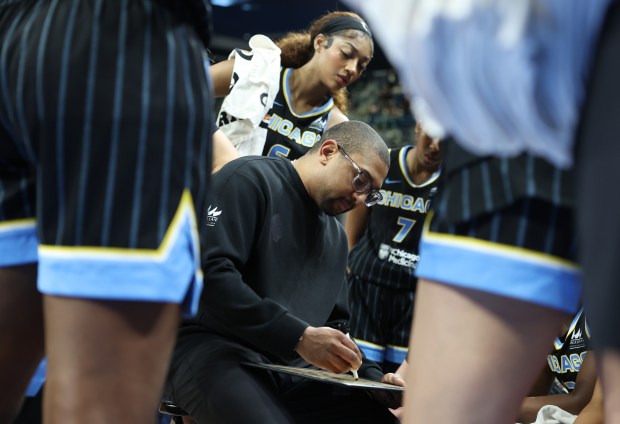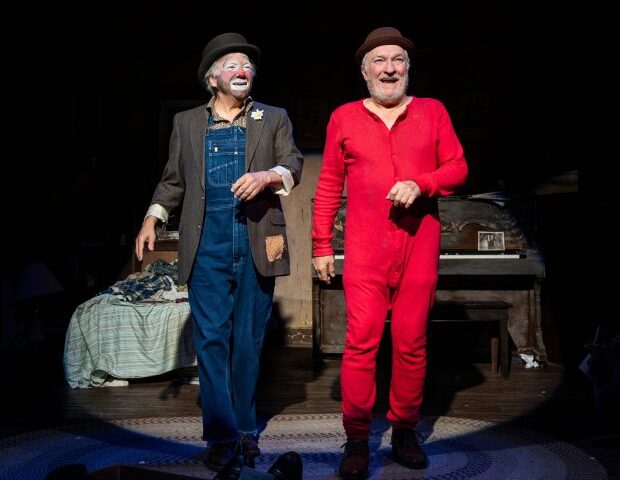The couple has a cute dachshund named Dahlia, who enjoys napping on a couch near the front windows of as colorful a storefront business as you are likely to find here or, for that matter, anywhere.
It’s called Heart & Bone Signs and the couple is Andrew and Kelsey McClellan. They are artists, and what they have been doing here for more than a decade, though working in relative obscurity, is painting the town. Literally.
They are sign painters and gold-leafing artists, practitioners of venerable art forms that were once so prominent here that the city was, without argument, the center of the sign painting world but, after new machine technologies were introduced, all but extinct by the 1980s.
You can, if you open your eyes, see their work around the city and suburbs, Blue Island being an especially inviting ”canvas” for them these days. You can, if you are riding in an airplane, see their work that has transformed the roofs of warehouses with paint and company logos.
Also, if you open your eyes, you will see the work of artists of previous generations, on the brick walls of buildings, faded and sometimes discovered upon the demolition of adjoining structures. Those are commonly known as “ghost signs,” and they grabbed the eyes of the McClellans when they came to Chicago.
They are native Coloradans, first meeting as students on the campus of the University of Colorado in Denver, falling in love in a sculpture class, getting married and eventually going through the arduous process of being accepted into post-graduate studies at the School of the Art Institute of Chicago.
They enjoyed that, learned a lot, but were unable to meet the financial demands of a second year’s tuition. But they loved the city and, while working non-art jobs, began to explore its rich, if hidden, sign painting traditions.
They met and learned from artist Stephen Reynolds, who was instrumental in showing them how to approach materials and techniques, and from Bob Behounek and Robert Frese, a gold-gilding expert who further informed, taught and enlightened them.
And then they found Dan Colyer, who, as a young sign painter, had saved piles of sketches used by the Beverly Sign Co. from the garbage heap.
“It was a miracle that he has saved them, kept them all these years,” says Kelsey.
They discovered more stories and facts and were introduced to other former artists and gained great insight into the history of the company. It compelled them to start a publishing company, Heavy Pages Press, and produce a book, “The Golden Era of Sign Design: The Rediscovered Sketches of Beverly Sign Co.,” a beautiful 12” x 8” hardcover book that provides an extensive look at the incredible sketches of Chicago’s preeminent outdoor sign company, Beverly Sign Co., famous and admired across the country.
It’s a terrific book, its page filled with art, along with some very informative words that speak to the history and significance of the company, of sign painting and a has a lively interview with Colyer, who says, in reference to legendary designer and teacher Ken Millar, “Oh my gosh, he could not spell a word to save his life. He would be drawing a sketch, and come to me and my sister to get the correct spelling of the words he was writing. Too funny! He may not have been able to spell, but once he got it from us, he was off to the races!”
It was at a book talk at the Hamilton Wood Type and Printing Museum in Two Rivers, Wisconsin, that the McClellans met Bryan Bedell, a designer who has long worked at a Chicago company called Field Notes.
Enthusiastically, he told his boss, pal and the company’s founder and president, Jim Coudal, about the book.
Coudal told me, “I pride myself on knowing a great deal of Chicago history but I did not know about this lively, fascinating sign painting chapter.”
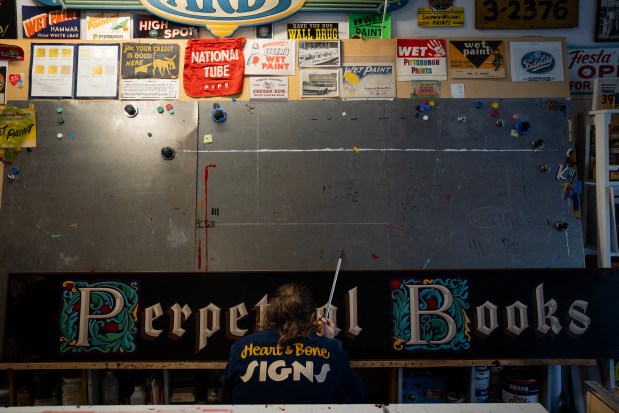
And so there came to be Field Notes’ 66th Quarterly Limited Edition for the spring of 2025. It is “The Chicago Look,” “which explores a chapter of American design and typographic history through the lens of a single, highly influential — and sadly now-defunct — enterprise.”
The limited edition was a huge success and a visit to the Field Notes website will entertain you with Steve Delahoyde’s short film about the McClellans and show you the wide and wonderful extent of Field Notes offerings, what I have previously called “a distinctively American story… done it in an irresistibly artful way.”
Talking to them, it’s easy to feel that the McClellans are pleased to be on an aesthetically rewarding journey. Though they have produced hundreds — “maybe a thousand by now,” says Andrew — of pieces of art (OK, call them signs if you must), they seem to lack the self-promotional genes.
“We don’t advertise,” says Kelsey. “Social media has been pretty beneficial, but we like our work to speak for itself.”
They enjoy the collaborative process with clients and word of mouth has been steady. And it’s getting louder too.
Their paintings, paired with their inherent curiosity, have made them among the most forceful advocates for this art form. In the summer of 2022, the McClellans and Behounek and Frese acted to save ghost signs in the Ravenswood neighborhood slated for demolition. With community support, they raised the money that enabled many signs to be restored or removed and saved. And that experience is what first introduced them to the Beverly Sign Co. story.
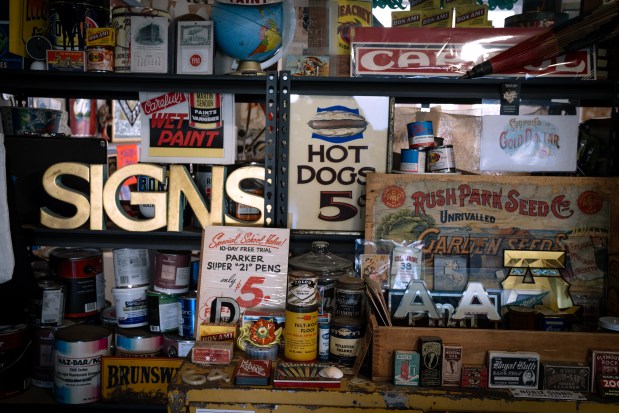
In their storefront headquarters, the McClellans are surrounded not only by the tools of their trade — ladders, pens, paints, quills, razor blades and other gizmos. The walls are covered with dozens of signs, many sizes, shapes and colors, names in different typefaces, all of them once part of the city’s commerce and diversion, its history.
“It is wonderful for us to keep this tradition alive,” said Kelsey.
As we talked, I learned of a breed of workers who used to paint buildings. “They were called wall dogs,” said Andrew. “Because, I think, they worked like dogs, tethered to the sides of buildings in any kind of weather.”
Then he said, “I think that people who hire us are expressing a level of authenticity for their business. These handcrafted signs, the gold-gilding, are ways of saying ‘We are here to stay.’”
On the couch, the little dog stirred.
rkogan@chicagotribune.com


